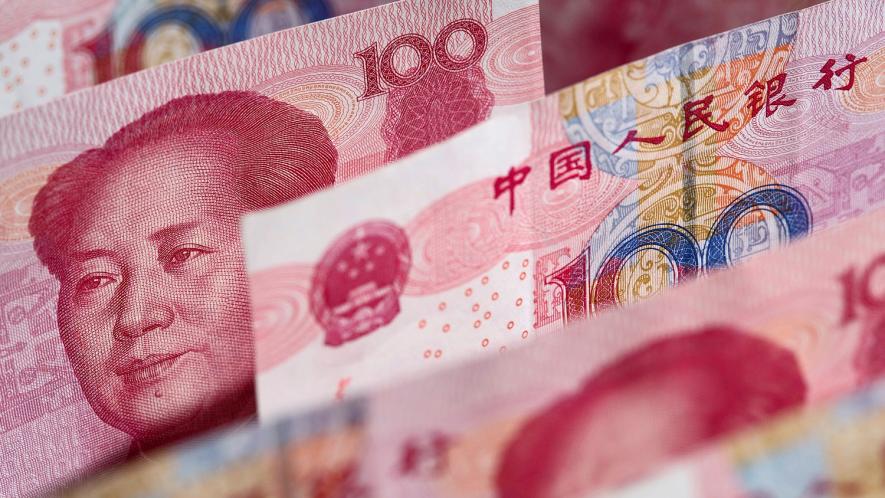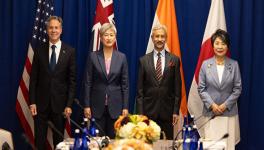Chinese Renminbi Bloc Growing, its Size is Now More than 30 per cent of Global GDP: IMF

New research from the International Monetary Fund confirms the increasing weight of the Chinese currency Renminbi in the global arena. According to an IMF Working Paper released in January 2018, the Renminbi currency bloc’s “economic size” is estimated to be more than 30 per cent of the global GDP, only second behind the size of the dollar bloc which reached an average share of 39 per cent of global GDP in 2011-15.
The Working Paper titled “Reserve Currency Blocs: A Changing International Monetary System?” has been authored by Camilo E Tovar and Tania Mohd Nor.
While the common approach to measure the degree of currency diversification is to examine the currency denomination of trade and financial assets, Tovar and Nor have adopted an alternative approach. In their paper, they measure the degree of currency diversification by “examining how reserve currencies influence currency fluctuations across the world and how this influence has changed over time.”
The US dollar has been the principal reserve currency for the countries of the world for nearly three-quarters of a century.
But the rise of China as a major economic power has meant a concomitant rise in the importance of its currency as well. Iran and China recently discussed ways to avoid using the dollar as a settlement currency in trade, while the German central bank has decided to include the Renminbi (RMB) in its reserves. The European Central Bank (ECB) started
buying renminbi assets in 2017.
China is also planning to launch the first yuan-denominated oil futures contract in Shanghai on March 26.
The “dollar bloc’s economic size reached an average share of 39 percent of global GDP over the 2011-2015 period,” said the IMF paper.
“The RMB currency bloc is estimated to follow with an average share size of 31.6 percent of global GDP, and then the euro bloc with an average share size of 20.3 percent of global GDP. The yen and the pound blocs are estimated to account for an average relative size of less than 6 percent of global GDP, respectively.”
The paper says that the share size of the dollar bloc declined following the global financial crisis which began in 2008, and has stabilized since 2012. The economic importance of the RMB bloc has increased in this period, although the steady increasing influence of the RMB has lost some steam since 2013.
“The rising global influence of the RMB bloc is not exclusively associated with the increasing size of the Chinese economy itself, but reflects an expanding influence of the RMB beyond its own borders,” the paper adds.
The influence of the Renminbi is particularly significant among the BRICS countries. While there is no evidence of an Asian RMB bloc, the Renminbi is increasingly influencing the dynamics of currencies in some other large economies of Latin America (Chile and Colombia), Middle East (e.g. Iran) and Australia.
The paper says that the introduction of the euro did not result in a greater importance of the euro’s currency bloc. “It was only until after the global financial crisis that the euro bloc appears to have gained importance, but the gain was short lived. In 2010 the euro appears to have been hit by debt problems in several economies, resulting in an increase in debt levels from about 60 to over 90 percent of GDP in more recent years.”
The value of the Chinese currency was pegged to the US dollar until 2005. China has been shifting out of this peg since then, and taking measures to support the international role of the currency.
The paper notes that some countries in the past have deliberately chosen not to support the internationalisation of their currencies, in spite of their rising economic power. This was the case, for instance, with the German Deutsche mark in the 1970s, when the West German authorities introduced capital controls to discourage its international use.
The paper argues that current account deficits might be positively correlated with the relative importance of the dollar bloc, while the current account surpluses might be negatively correlated with the influence of the RMB bloc. China’s current account surpluses, therefore, might possibly have slowed down the expansion of the RMB bloc.
Higher demand for a currency would strengthen its valuation, and result in larger current account deficits, a process which could reinforce itself over time.
The US has been running high current account deficits for a long time now, providing the principal source of demand for the rest of the world while paying for its imports by printing dollars. For how long this will continue remains an open question.
Get the latest reports & analysis with people's perspective on Protests, movements & deep analytical videos, discussions of the current affairs in your Telegram app. Subscribe to NewsClick's Telegram channel & get Real-Time updates on stories, as they get published on our website.
























